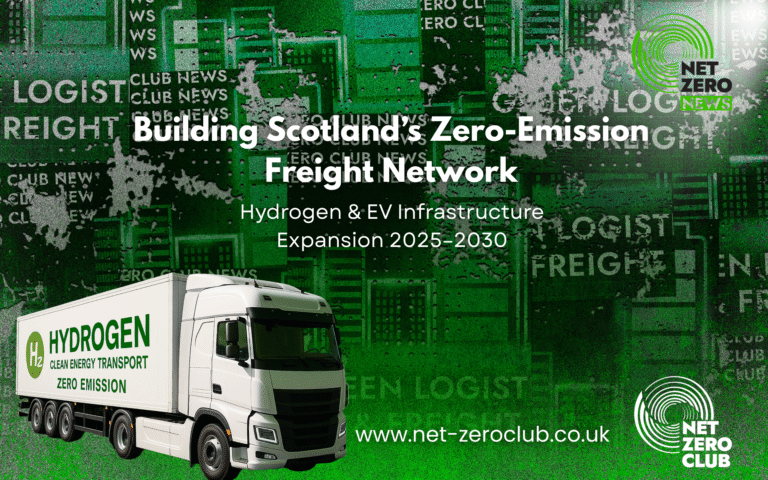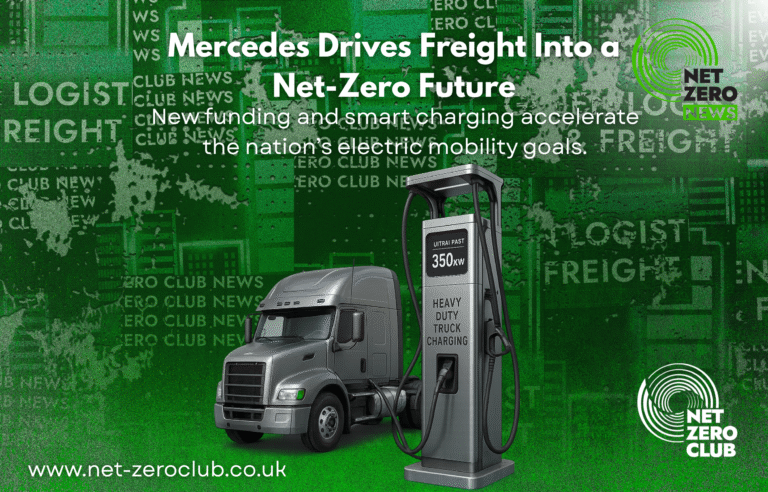Cost Comparison: eHGV vs Diesel in Europe Revealed

Hello, Champions of Net Zero!
In a groundbreaking study conducted by Snap, a leading digital solutions provider for mobility, new insights have emerged that shed light on the potential savings for fleet operators transitioning from diesel to electric heavy goods vehicles (eHGVs) across Europe. As the world grapples with the pressing need for sustainable transport solutions, this research provides a clearer picture of the financial benefits of electric vehicles (EVs) in the logistics sector.
The study meticulously compares the recharging costs of electric HGVs against the refuelling costs of their diesel counterparts, revealing the significant savings achievable per 100 kilometres (62 miles) in each European country. Notably, Iceland stands out as a beacon of potential savings, offering an impressive €61.03 in cost reductions for every 100km driven electric compared to diesel. At the other end of the spectrum, Croatia ranks last with savings of €19.96.
As the UK navigates its own transition, it finds itself positioned in 11th place, with estimated savings of €36.23 per 100km. This data underscores the varying economic landscapes across Europe, highlighting both the opportunities and challenges that lie ahead for fleet operators considering the shift to electric vehicles.
Looking to the future, a report by McKinsey & Company forecasts that by 2030, Europe will require over 300,000 public and private charging points to accommodate the growing demands of medium and heavy-duty trucks—a dramatic increase from the mere 10,000 available today. This stark statistic illustrates the urgent need for investment and innovation in charging infrastructure to facilitate the transition to electric HGVs.
However, the journey toward a fully electrified logistics sector is fraught with challenges. Fleet operators and drivers face a myriad of hurdles that must be addressed to ensure a smooth transition to electric vehicles. The research conducted by Snap highlights that substantial investment and continued research are imperative to support this shift.
The Top 10 Countries with the Highest Cost Savings in Europe
To illustrate the savings potential, here are the top ten European countries where fleet operators can enjoy the most significant savings when opting for electric HGVs:
- Iceland: €61.03
- Norway: €49.31
- Finland: €49.12
- Albania: €47.65
- Denmark: €44.23
- Sweden: €42.24
- Serbia: €41.60
- Netherlands: €41.58
- Portugal: €40.91
- Belgium: €38.85
The Top 10 Countries with the Lowest Cost Savings in Europe
Conversely, the following countries are identified as having the lowest estimated savings when recharging electric HGVs:
- Croatia: €19.96
- Cyprus: €21.16
- Moldova: €22.72
- Czechia: €23.51
- Georgia: €24.21
- Poland: €24.22
- Hungary: €25.77
- Luxembourg: €26.27
- Malta: €27.39
- Bulgaria: €28.07
According to Snap, while eHGVs, alongside fuel and biofuel, will play a crucial role in achieving the UK’s climate targets, advancements in battery technology, the performance of electric HGVs, and significant investment in megawatt charging infrastructure are essential. This infrastructure is vital for enhancing the reliability and accessibility of charging stations across Europe, which in turn will alleviate drivers’ anxiety surrounding charging and bolster confidence in electric trucks.
To facilitate this transition, Snap emphasises the importance of training drivers on effective charging etiquette and planning. Nick Renton, Head of European Strategy & Business Development at Snap, stated, “Our research revealed discrepancies around Europe of up to 54% between the countries with the highest and lowest savings when recharging an eHGV. As the industry works toward meeting environmental targets, it’s imperative that fleet operators and drivers have the confidence and the infrastructure to transition to electric vehicles and benefit from the cost savings in every market.”
He further stressed, “We want to see industry leaders support fleet operators and drivers in overcoming some of the challenges to EV adoption, such as limited infrastructure, unreliable charge points, and high upfront costs.” Renton’s comments underscore the collective responsibility of all sectors to contribute to the achievement of climate goals across Europe.
While the potential cost savings from eHGVs are indeed promising, it’s crucial to recognise that fuel will still be part of the energy mix for the foreseeable future. Biofuels, in particular, are anticipated to play a vital role in meeting environmental objectives as the transition to electric vehicles continues to evolve.
As we move forward, it is essential for fleet operators and drivers to be equipped with the necessary tools, knowledge, and infrastructure to embrace this transformation. The journey to a sustainable future for logistics is not just a possibility; it is an imperative. Together, with innovation, investment, and collaboration, we can pave the way for a greener, more efficient transport sector that aligns with our collective climate goals.
As we engage in this critical dialogue about the future of transport and the role of electric vehicles, let us remain committed to supporting one another through this transition. By sharing knowledge, investing in infrastructure, and fostering partnerships, we can ensure that the shift towards electric HGVs is not only achievable but also advantageous for all stakeholders involved.
Stay tuned to the Net Zero News Network for more updates and insights on the path toward a sustainable future in logistics and beyond!

 Got net-zero news, project updates, or product launches to share?
Got net-zero news, project updates, or product launches to share? 

